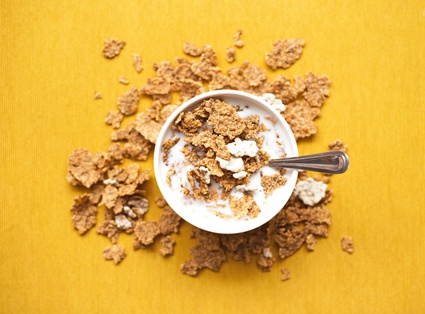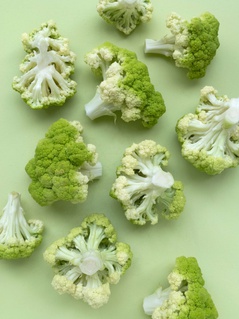In addition to slimming recipes, when you are watching your weight or want to regulate it, you need to know and respect some basic dietary principles.
The value of eating low glycemic index (GI) foods.
Remember that the glycemic index allows to measure the speed of assimilation of sugars contained in a food. High GI foods cause sharp increases in blood sugar (glucose) levels. The digestion of carbohydrates involves the hormonal system and more specifically the pancreas and the insulin it secretes. When food is ingested, the pancreas immediately responds by secreting insulin, a hormone that allows the cells to capture the sugar circulating in the bloodstream following the breakdown of food sugars. Sugars that are quickly assimilated (high GI) are also quickly stored. From then on, the body's call for a new sweet food comes just as quickly, to provide it with new fuel (glucose). If not, the person may experience hypoglycemic episodes or mild weakness or tremors.
This phenomenon, reproduced regularly, can lead to weight gain because of the important cellular storage of sugars, but also because the organism never calls upon the less available and deeper reserves which are those constituted by fats.
Take into account the concept of glycemic load.
In order to regulate your weight, you should also be concerned about the glycemic load of the foods you eat. A food almost always contains different types of carbohydrates, which is what constitutes its glycemic load. It is obvious thatthe glycemic impact of a food is directly dependent on the kinds of sugars it contains.For information, the glycemic load (GL) is calculated by multiplying the GI of a food by the amount of carbohydrates a serving of the same food contains. The whole will be divided by 100.
For example, amylose, a sugar found in cereals, potatoes or legumes, is more resistant to digestive enzymes. It therefore has a lower GI than amylopectin (another sugar contained in these same foods) which is more rapidly digested. Foods rich in amylopectin have a higher GI. They therefore tend to generate more weight gain than those rich in amylose.
Cereals (rice, wheat) contain more amylose (25%) than potatoes (20%), and legumes even more (30 to 66%). On the other hand, potatoes contain 80% amylopectin, compared to 75% for cereals (rice, wheat) and 70 to 33% for legumes.

The value of avoiding refined, processed, ground products, etc.
All refined, processed, ground or liquid products generally have a high GI.
On the other hand, products that are more complete (fruits, cereals, etc.) have a moderate or lower GI. It is better to eat a whole fruit than to juice the same fruit because the juice has a higher glycemic index than the whole fruit.
Additive-free, raw and natural: 3 slimming assets!
The scientific community is increasingly recognizing the fact that chemical molecules are stored in fatty tissue. The body is an extremely intelligent machine, so it will look for the simplest and least dangerous way to get rid of these unknown molecules that it considers as intruders. It is thus that it will store them in the least "noble" tissues of the body, namely the fatty tissue in order to preserve the vital organs (liver, brain). This adipose tissue therefore gradually increases in volume in order to increase its capacity to store toxins. The most common toxics are: chemical food additives, drugs (including vaccines), cosmetic chemicals, pesticides and other plant protection products, food packaging contaminants (e.g., bisphenol A), etc. You will have understood that the most natural foods (without toxins, organic or from your own garden) work towards a good balance of body mass.
As for cooking, especially at high temperatures, it denatures the components of the food and leads to an increase in their glycemic index. Low temperature cooking, stewing or steaming should be preferred, but the ultimate in weight management is to include at least 50% raw food in your daily diet.

The amount of food ingested.
Is it useful to remember that the quantity of food consumed must also be taken into account?
If you're a foodie or gourmet...
If you have a sweet tooth and like starchy foods, you will of course have to reduce the quantity of this type of food in your food rations, but above all, you will have to make sure that you choose low GI foods. For this you can consult the many tables[i] glycemic indexes presented on the Internet among others.
If you can reduce your starch intake by 15% and choose foods with a GI of less than 30%, you will have already reached a milestone in weight management, since this will reduce the total CG of your food by almost 40%!
Opting for a low-carbohydrate diet gives quick results in terms of weight loss, but adopting a lower carbohydrate diet and incorporating low-GI foods gives slower, much more stable results that are much more beneficial in the long run from an overall health perspective.
[i] https://www.lanutrition.fr/bien-dans-son-assiette/le-potentiel-sante-des-aliments/index-et-charge-glycemiques/tableau-des-index-glycemiques



